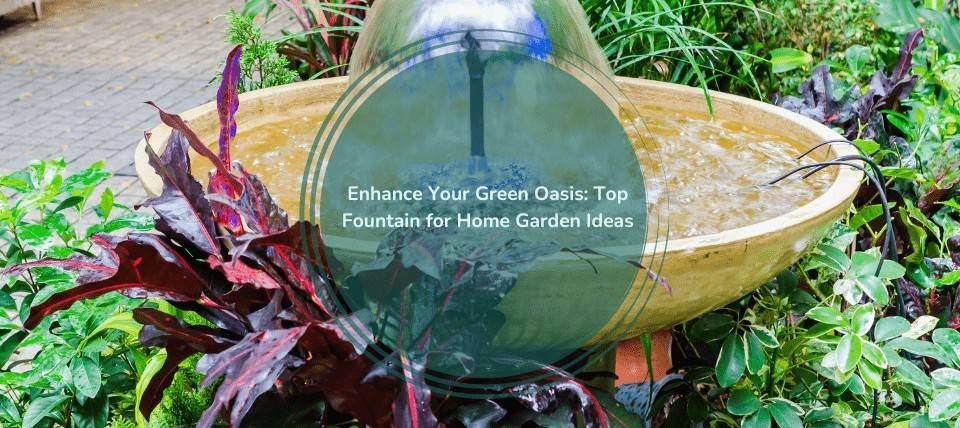By gaining an understanding of the different types of fountains for a home garden, including wall-mounted, freestanding, and tiered fountains, individuals can weigh the respective pros and cons to make informed decisions that align with their unique needs.
Choosing and installing a fountain for home garden involves careful consideration of the available space, desired design, and various other factors. There are different types of garden fountains, each with its own installation requirements, advantages, and disadvantages. It’s important to understand the options and choose the right fountain for your specific needs.
Transform Your Outdoor Space with the Perfect Fountain for Home Garden
Tiered garden fountain
These beautiful water features consist of multiple tiers with water cascading from one level to another. They are classic examples of old-world charm mixed with new fountain designs. They are the perfect addition for those who want to add a touch of formal elegance to their gardens along with some soothing aquatic sounds.
While tiered water fountains can be sophisticated, they can also be quite large. This means homeowners who don’t have a large garden space should avoid installing a tiered fountain. Tiered fountains are considered ornate, so people with a minimalistic style may not appreciate them.
Additionally, if you don’t want to spend a lot of money, don’t go for a tiered fountain because it will cost you more than you intend. If you are someone who does not want to engage in a lot of maintenance, avoid a tiered fountain because it will require frequent dusting and mopping of the basins. Additionally, since the top tier is at a height, you’ll also need a ladder to reach it.
Wall fountains
Wall water fountains, also known as wall-mounted fountains, are a specific type of fountain designed to be affixed to a vertical surface, such as a wall or a fence. They typically feature a basin or a spout from which water cascades into a reservoir below.
These fountains are an excellent choice for those looking to save space, as they make efficient use of vertical installations. However, it’s crucial to consider the structural integrity of the wall where the fountain will be mounted. If the wall is not robust enough to support the fountain’s weight and the constant flow of water, it may not be suitable for this type of installation.
Therefore, it’s essential to ensure that the chosen location can adequately accommodate the fountain to prevent any potential issues.
Birdbath fountain
If you are a keen bird watcher or ornithologist, you might find adding an aquatic feature to your garden to be a delightful idea. Birds are naturally drawn to flowing water rather than stagnant water, so having a birdbath can attract beautiful birds to your garden.
In addition to being attractive to birds, birdbaths can also serve as the focal point of your garden due to the soothing sound of babbling water. With birds of all colors, shapes, and sizes chirping around the birdbath, it would create a heavenly scene.
On the other hand, if you’re too busy with your daily job and have no time to spare for fountain maintenance, then you should probably reconsider getting a birdbath. Birdbaths require regular cleaning and maintenance.
Algae buildup is common in the water, and unfortunately, you cannot add any algae-killing chemicals since the water is meant to be drunk by the birds. Additionally, if you live in colder regions where water often freezes, a birdbath may not be a great choice for installation. Moreover, if you have pets like dogs or cats, they might pose a danger to the birds that are drawn to the birdbath.
Spouting fountain
A spouting fountain, also known as a jet fountain, is a decorative water feature that propels water upwards into the air. It typically consists of a submersible pump situated in a pool or basin, which forces water through a nozzle to create the desired fountain effect.
These fountains come in various designs and sizes, ranging from small garden fountains to large public installations. Despite their visually striking appearance, spouting fountains are generally affordable and can add a touch of elegance to any outdoor space.
While landscaping enthusiasts may appreciate the beauty of a spouting fountain, those with limited free time may not want to invest in one. Spouting fountains can enhance the curb appeal of a home, potentially leading to increased property values.
Freestanding fountains
Freestanding fountains are associated with relaxation and peace. Whether you are a meditation enthusiast or simply want to take a day off to enjoy a peaceful atmosphere, freestanding fountains can be the perfect addition to your space.
These fountains are self-contained units that do not require special installation like other fountains. They can be placed in any nook or corner of your house, or even in gardens. However, families with curious pets or babies who are drawn to flowing water might risk damaging the fountain.
Installing a garden fountain is an exciting endeavor that involves careful consideration of various factors to ensure a successful and enjoyable outcome. When embarking on this project, it’s essential to take into account the available space, personal design preferences, and specific installation requirements.
By gaining an understanding of the different types of garden fountains, including wall-mounted, freestanding, and tiered fountains, individuals can weigh the respective pros and cons to make informed decisions that align with their unique needs.
Taking the time to thoroughly assess these factors will ultimately contribute to the installation of a stunning garden fountain that enhances the beauty of the outdoor space and provides a serene ambiance for relaxation and enjoyment.




